Why you can trust Tom's Hardware
We are using the following system for our case test bed:
| CPU | Intel Core i9-9900K |
|---|---|
| Motherboard | Asus Maximus XI Hero WiFi |
| Memory | Corsair Vengeance LPX 3000 MHz, 16 GB (2x 8GB) |
| Graphics | Nvidia GeForce RTX 2070 Super Founder's Edition |
| CPU Cooling | Noctua NH-U12S Chromax Black |
| Thermal Paste | Noctua NT-H2 Thermal Paste |
| Storage | Corsair Force Series MP510 NVMe SSD, 480GB |
| Power Supply | Corsair HX750i |
Because this chassis isn’t a regular ATX case, nor a proper ITX case, I didn’t find it fair to test it with our usual setup for either of those. I can’t imagine many people will install air-cooled CPU coolers in this chassis, as it would put its best skill to waste. So I changed things up and gave myself a little more freedom with the build, to build something that’s more representative of how I expect the case to be used.
Of course, if it were entirely up to me, I’d build an ITX system in here with a high-end GPU, three radiators and a custom waterloop, but I don’t have the time (or all the parts on hand) for this. Thus, we’re going for an ATX system with an AIO, as I quite like the hilarious thought of cramming an ATX motherboard into an SFF-ish chassis.
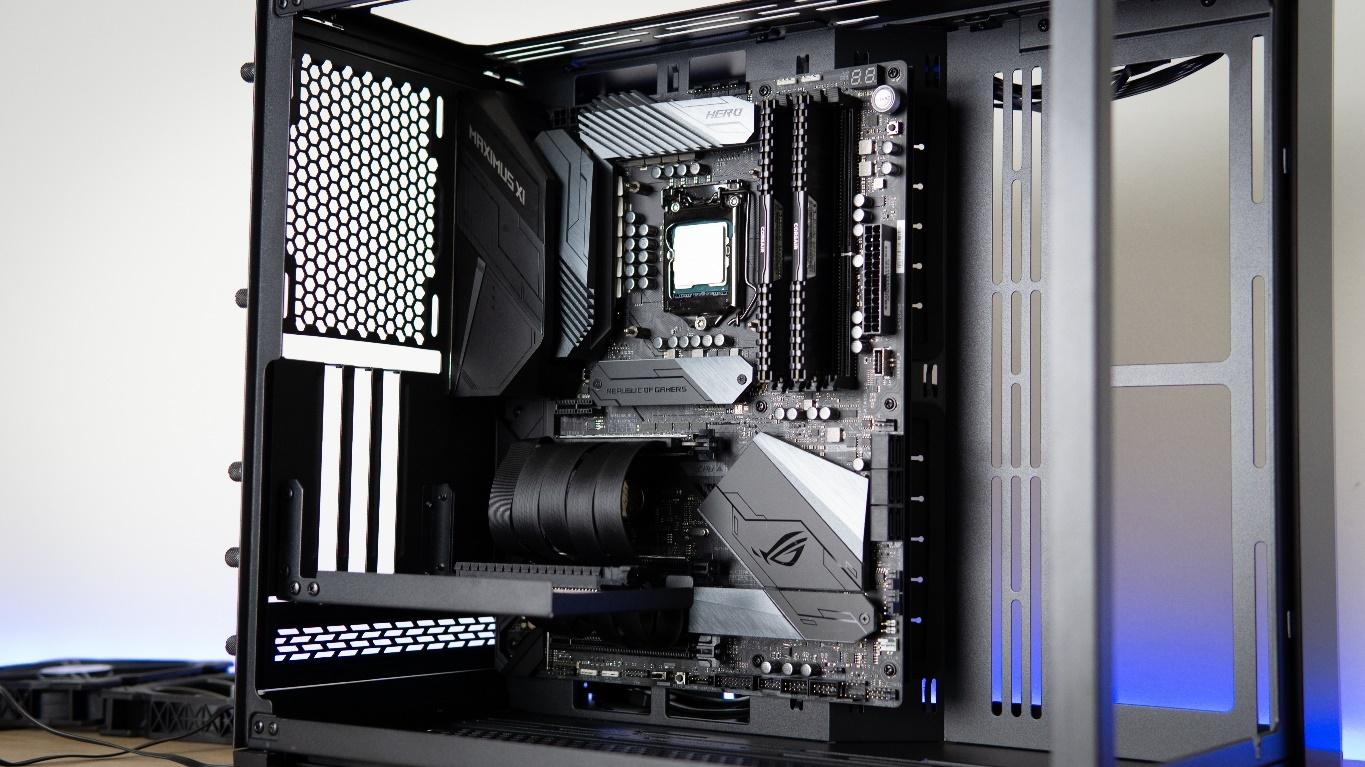
I first rebuilt the chassis to allow it to accommodate an ATX board with a vertical GPU mount. I then dropped in the Asus Maximus XI Hero motherboard with the Core i9-9900K CPU, Corsair Vengeance memory, and Corsair MP510 SSD installed. The chassis doesn’t have a center anchoring standoff, so I had to lay it onto its side to secure the board.

I then proceeded to install the radiator on the side. It would of course be better for thermals if I drew fresh air in from the outside, but it looks better with the fans pointing this way. To install it, I pulled the pump through the big gap in the radiator mount and then attached both fans, after which I dropped the cold plate & pump combo unit onto the CPU.
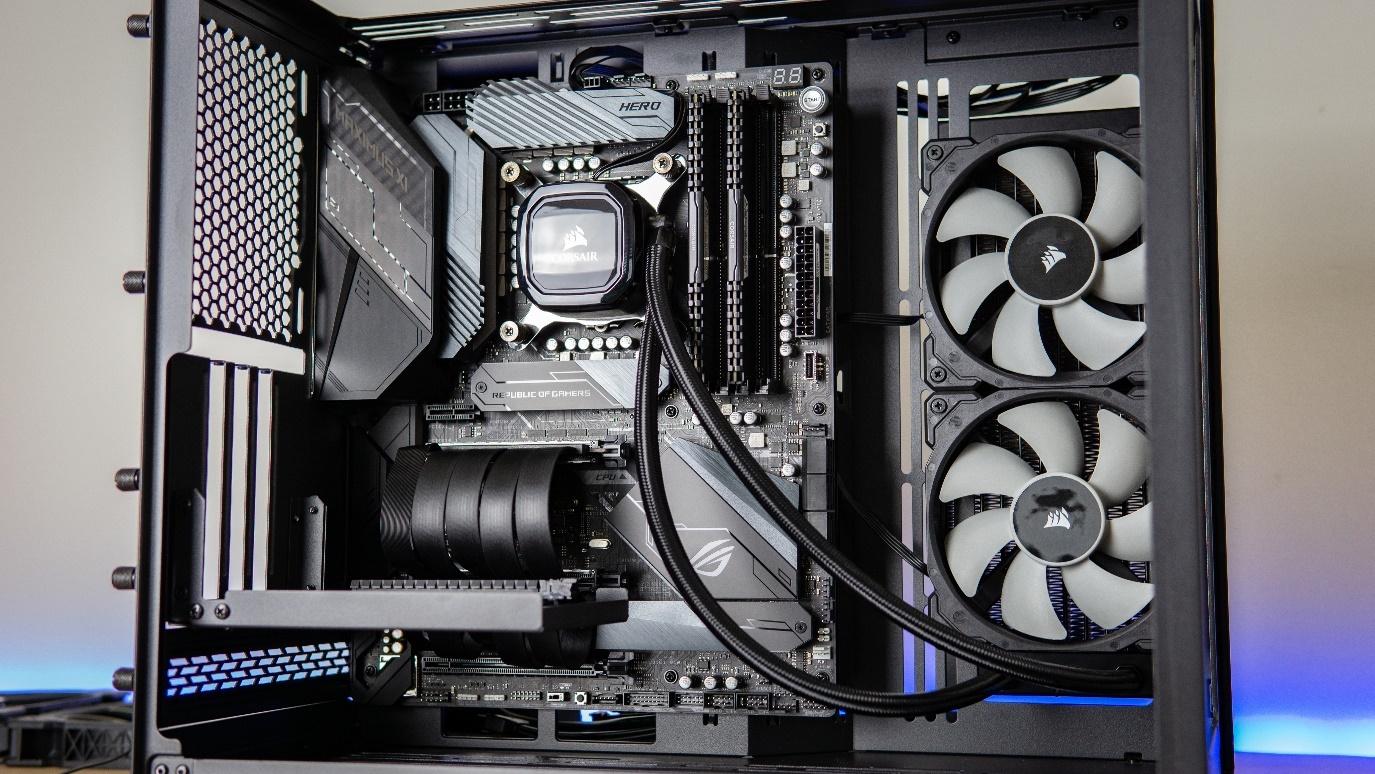
I could have opted to install the hoses at the top, but I found that this puts quite a bit of stress on them, so I installed their ports at the bottom.
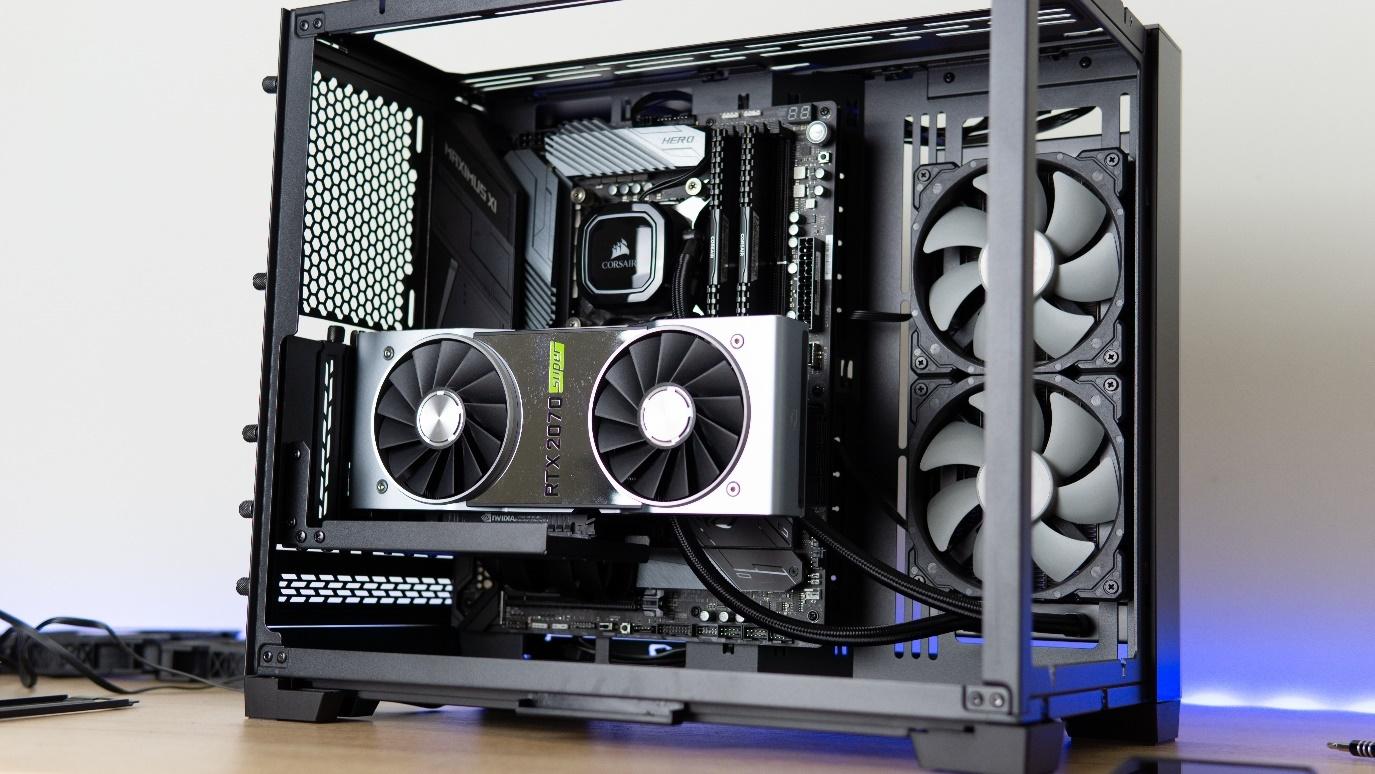
After that, the GPU dropped into place with ease. At first, it was sagging a little, which immediately led to panic – we couldn’t have a sagging GPU in a build like this – that’s not pretty. But it turned out I hadn’t fastened the brace in the back properly, so two turns with the screwdriver had it all sitting straight.
Get Tom's Hardware's best news and in-depth reviews, straight to your inbox.
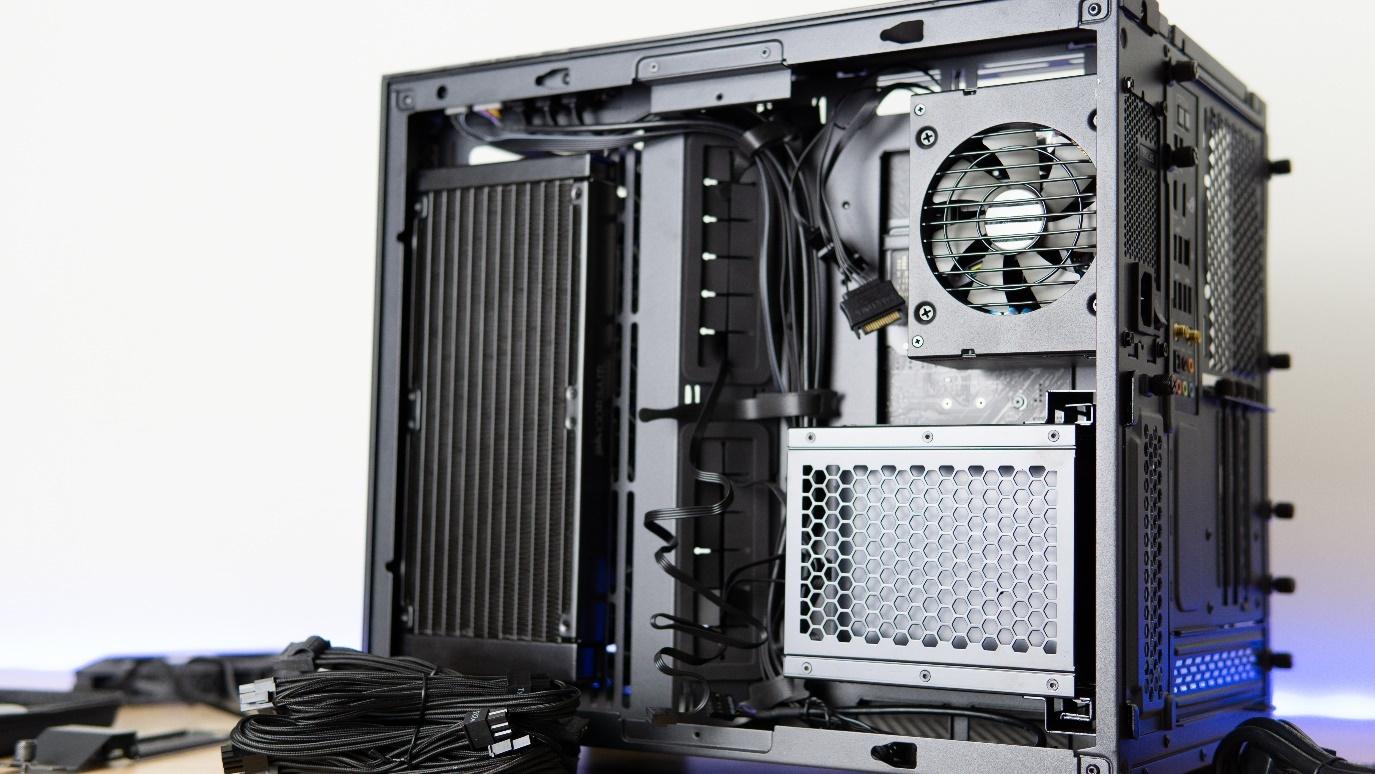
Then, it was time to install the power supply. I used Corsair’s SF750 PSU, as I had this one around for the ITX test bench. It’s a hilariously small power supply, but it offers plenty of juice for the 9900K and RTX 2070 Super. It also comes with individually-sleeved cables, which are a very nice cherry on top for the build.
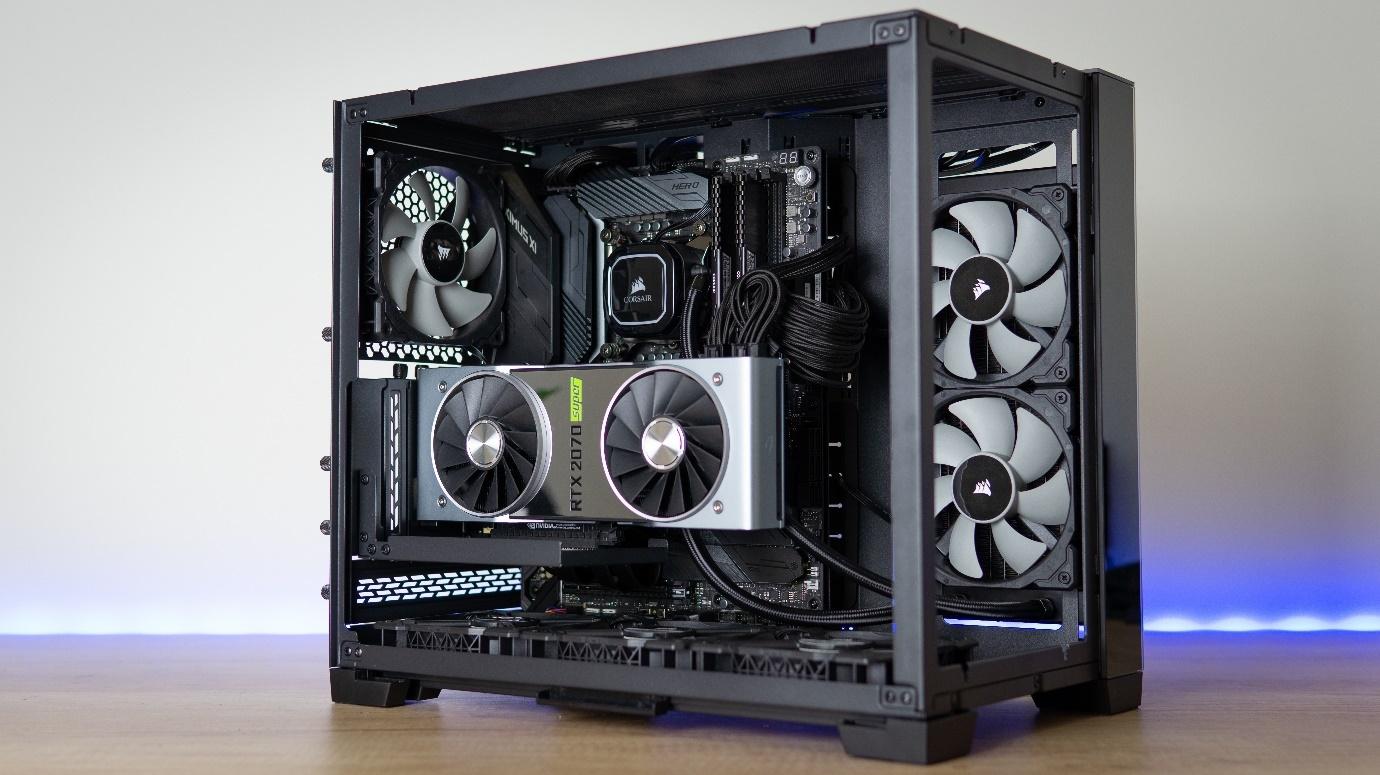
Then, I installed four more case fans. Three at the bottom and one at the rear exhaust. This should offer plenty of airflow to keep the system cool.
After doing up some of the cables, I noticed something else about the system. Everything was looking nice and snug. With the motherboard occupying the majority of the interior, fans at the bottom, the GPU had a nice bed of tech it was residing in, and while I’m normally not a big fan of vertical GPU mounts, there’s something about Lian Li’s approach that I quite admire. That, and the Founder’s Edition 2000-series GPUs from Nvidia are some of the best-looking cards out there.
The bracket fortunately leaves room underneath for fans, and it pulls the GPU inwards far enough to offer enough room for ventilation – which is often the biggest drawback of vertical GPU mounts. The GPU bracket in this configuration was so high up too that if I wanted to replace the lower rear shield with two expansion slots, I would be able to fit a sound card or other expansion card underneath the GPU, were I so inclined.
Cable Management
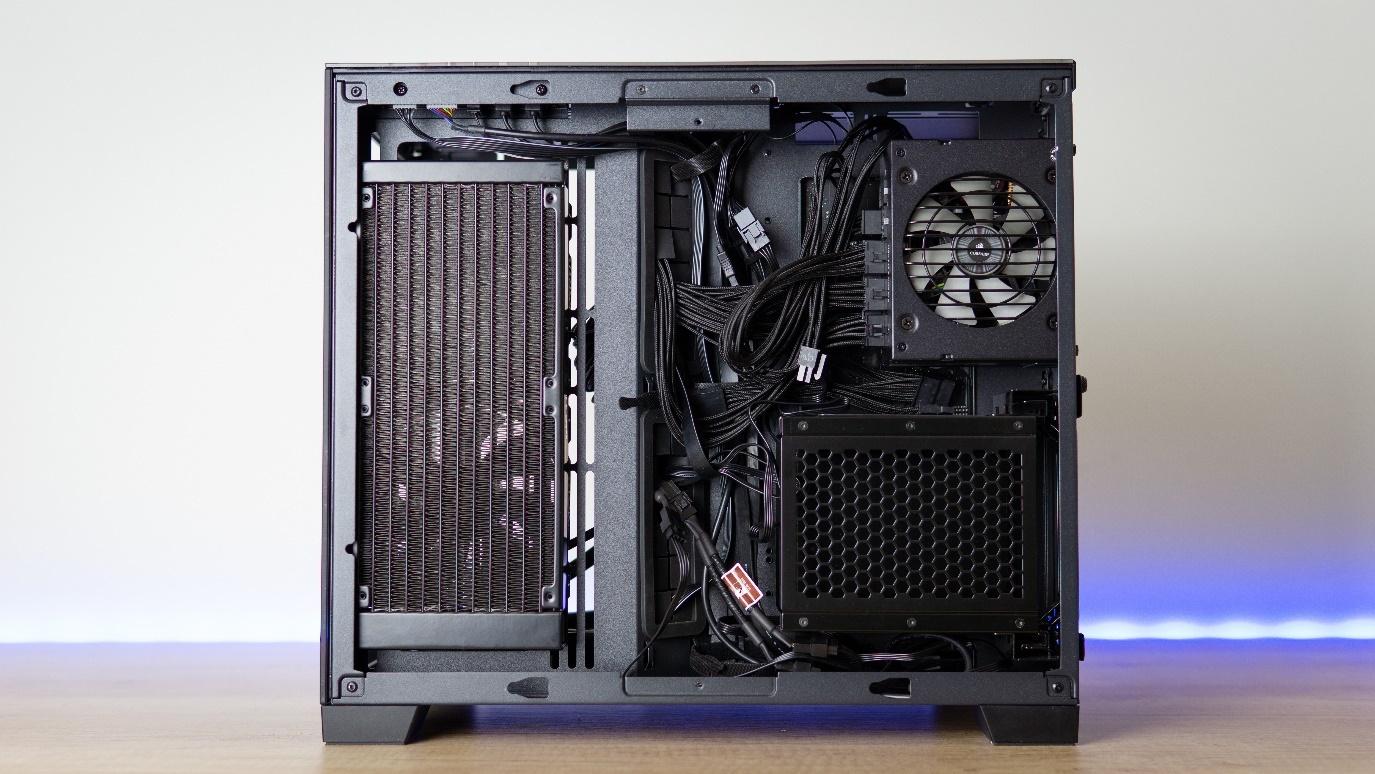
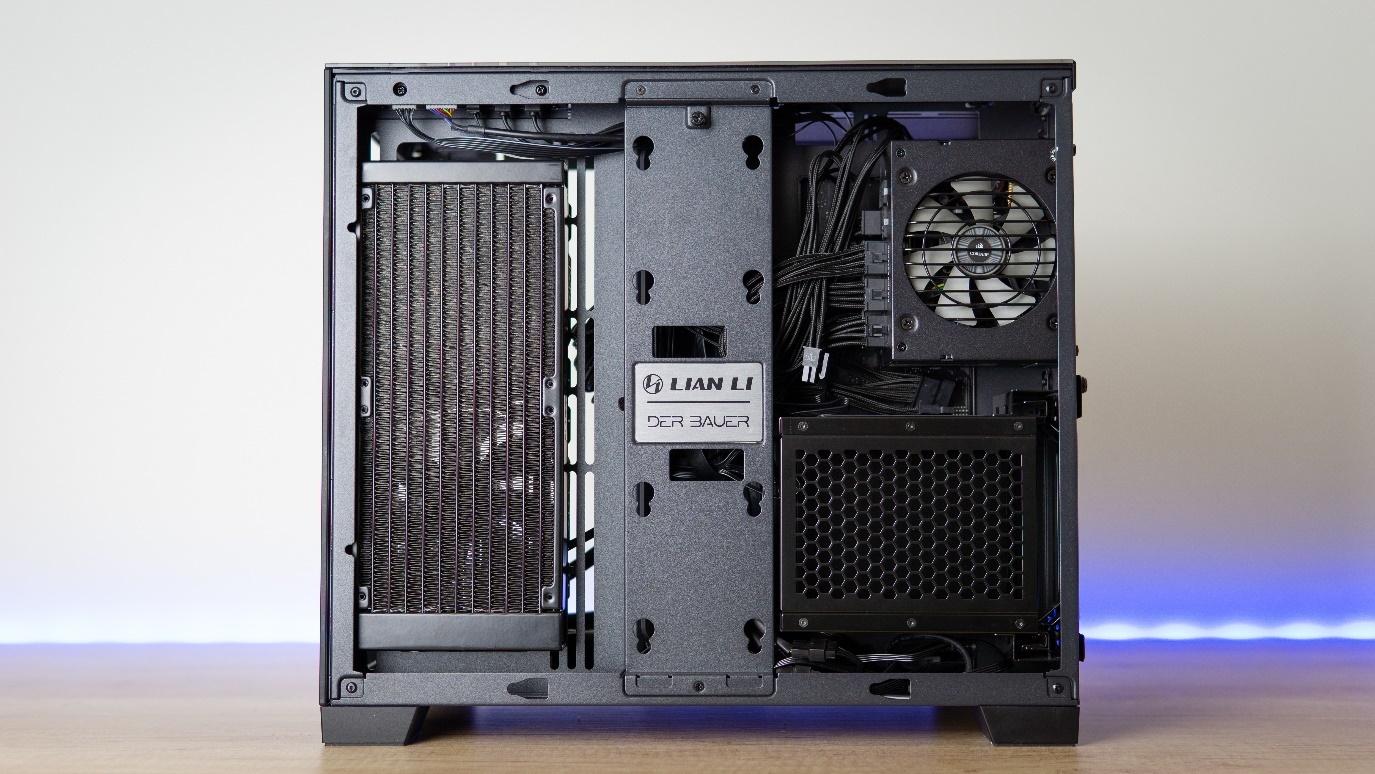
Cable management is one of those things that cases can either nail or fail. The PC-O11D Mini isn’t a case that makes any attempt to give you routing guides or anything, instead simply offering you tons of space to cram the clutter into, and this brute-force strategy works quite well. So that’s what I did – I pushed the cables in, shoved the cover onto it, and called it a day.
The hardware side looked tidy, so why bother putting any more energy into it? This might become a little more challenging if you populate the system with more fans, RGB controllers, hard drives and SSDs, but the internal trim piece with the Lian Li/Derbauer plaque is a helpful aid in keeping all the cables tucked away so that you can easily slide the side panel back on when you’re finished.
Build Complete
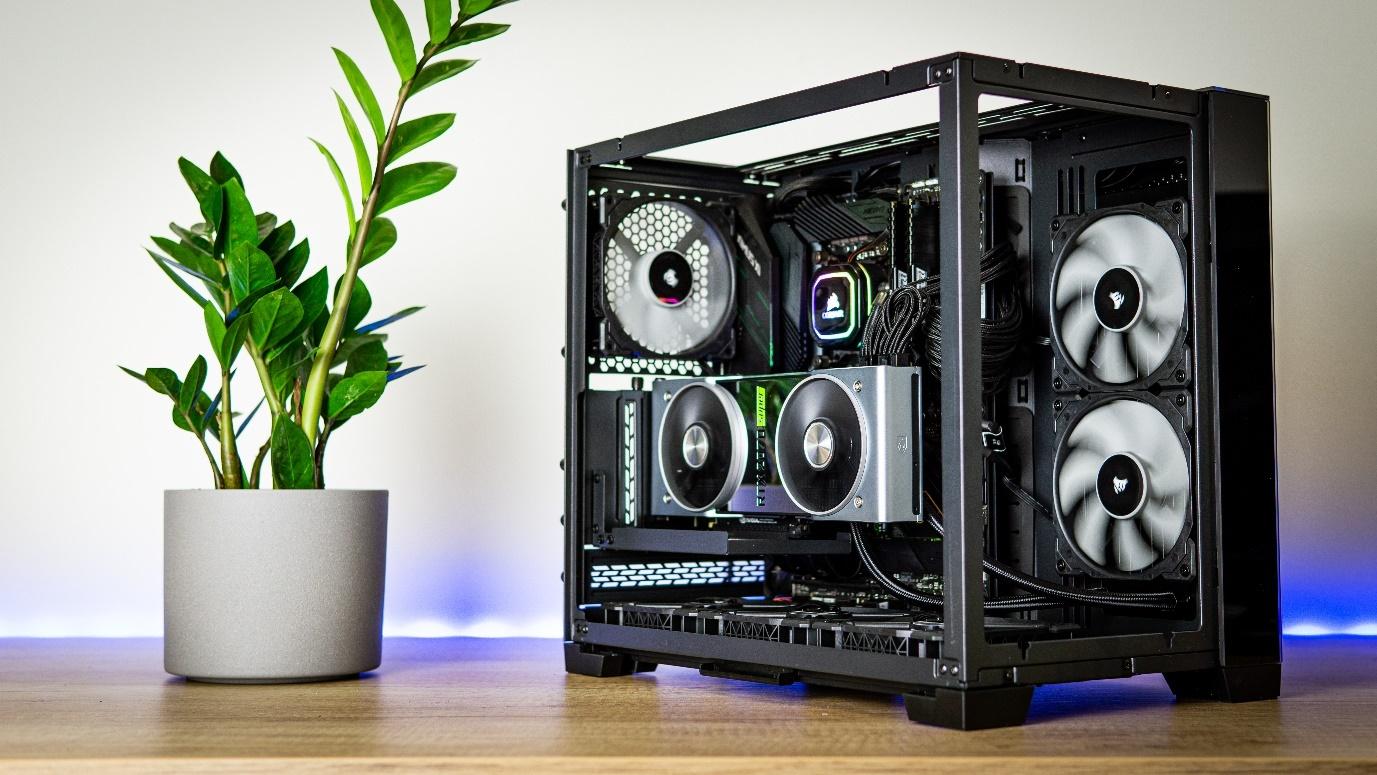
MORE: Best Cases
MORE: All Case Content
Niels Broekhuijsen is a Contributing Writer for Tom's Hardware US. He reviews cases, water cooling and pc builds.
-
HFirst I love the 011 cases. Built my last pc, a threadripper, with an 011 Dynamic. I just wish Lian Li would truly design these cases to be more flexible and allow an inverted setup with the glass on the right. Another nice plus would be an updated dual chamber design with a mesh front. A really nice touch would be an option to let us choose whether we want the power button and io ports to be on the top or the front.Reply -
Blindfly ReplyLeptir said:I'm really not sure this case qualifies as SFF or even "SFF-ish".
It really isn't, I mean on their own website its listed under mid size cases, its just mini for the O-11 series. I think they make it pretty clear that its an ATX capable case AKA not small -
ajr1775 Reply
It takes an SFX power supply but yeah, nothing that can hold a full size GPU should be labeled SFF.Leptir said:I'm really not sure this case qualifies as SFF or even "SFF-ish". -
Uferizer Reply
This is the preferred way with a front or side mounted AIO. Have you not watched the behemoth Gamer Nexus video on this?ajr1775 said:That intro picture........AIO tubes on the bottom.......NOOOOOOOOOOOOOOOOO
BbGomv195sk:1076View: https://youtu.be/BbGomv195sk?t=1076 -
ajr1775 Reply
Missed that one. Thanks for that. Always under the preconceived notion that the tubes at the top of the radiator should always be higher than the pump itself.Uferizer said:This is the preferred way with a front or side mounted AIO. Have you not watched the behemoth Gamer Nexus video on this?
BbGomv195sk:1076View: https://youtu.be/BbGomv195sk?t=1076 -
Uferizer Reply
Yeah it's a bit finicky, especially in this case where if you're like me and want to go full ATX, you have to mount the rad for the AIO on the side (not enough space on top). If you've got any sort of normal sized GPU, I think even a 3070/80 FE, then having the tubes at the bottom of the AIO is gonna be hard. I guess in this case the solution was to mount the GPU vertically. From what I understood in the Gamer Nexus video though, having the tubes on the top in a side or front mounted orientation is just going to be more noisy, whereas having the whole rad under the pump is detrimental to the lifespan of your AIO. So I may just have to live with the noise and gurgle because it just wont fit otherwise.ajr1775 said:Missed that one. Thanks for that. Always under the preconceived notion that the tubes at the top of the radiator should always be higher than the pump itself.
